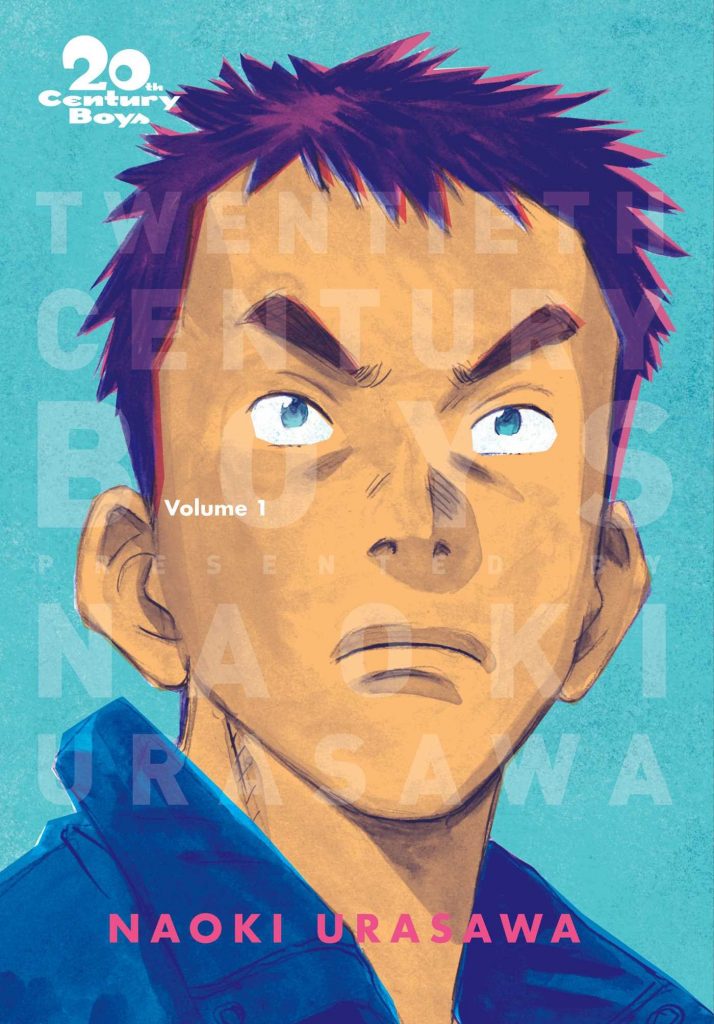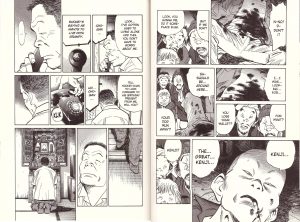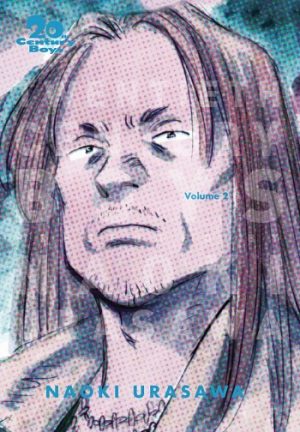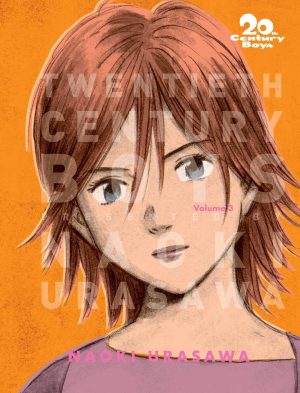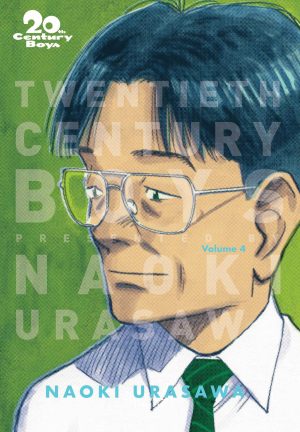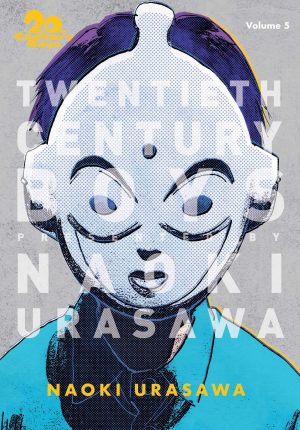Review by Ian Keogh
20th Century Boys is an epic series showcasing a magnificent ambition on a scale so rarely seen in American comics. It runs for thousands of pages, leaps between past, present and future, is beautifully drawn by a master draughtsman, and consistently, massively surprises, not least regarding the opening scene. In that, a group of people whose faces are concealed from readers are congratulated for their efforts in saving humanity from the worst disaster ever. The truth of that scenario will be revealed in the third volume of these Perfect Editions covering the entire series, each of which combines two volumes of the originally released paperbacks in a dozen books, including the two volume sequel.
Skipping back and forward through time is a feature of 20th Century Boys, but never as much as in these early sequences. They combine Kenji as a shopkeeper in the 1990s looking after his infant niece, left behind by his disappeared sister, and his late 1960s youth, when he and his friends spend an idyllic summer with a secret hideout, a secret sign, and concocting a set of plans as to how they’ll stop a supervillain taking over the world. The carefree youth is contrasted with the adult responsibilities of 25 years later as we’re gradually introduced to those children as they are now. Reading the opening dozen or so chapters again, it’s remarkable how diligent the plotting is, with so much that seems to be just background colour actually having significance several volumes down the line.
Because Naoki Urasawa astounds us with his dazzling storytelling, it can slip by just what a phenomenal artist he is. Whether a scene is urban or rural, slow or fast, quiet or loud, solo or crowded, the art is always in service to the story. He distinguishes the cast when they’re young, yet they’re also consistent with their adult counterparts, and the choices he makes in designing his pages are perfect. The character seen in the left hand sample art only has a small role in the series as a whole, but visually Urasawa makes him notable, and invests him with personality.
Although it may seem so many chapters have little connection, although all provide interesting drama, Urasawa is suckering us in, and the bomb drops in the final chapter. A mysterious character calling himself Friend is influencing events and causing deaths, and these are following the villainous masterplan that Kenji and his friends constructed when children. Combating that when hardly anyone else realises becomes the driving force for the entire thrilling series. Strap in and settle down for the journey, which opens out in Volume 2.
This material originally saw print as volumes titled just 01 and 02 on the covers, but Friends and The Prophet inside. Follow the links for greater plot detail. In terms of which series of books to buy, though, this is the only realistic choice. While many of the original editions may seem cheaper, volumes 17 and 19 are now almost impossible to find at a reasonable price.
